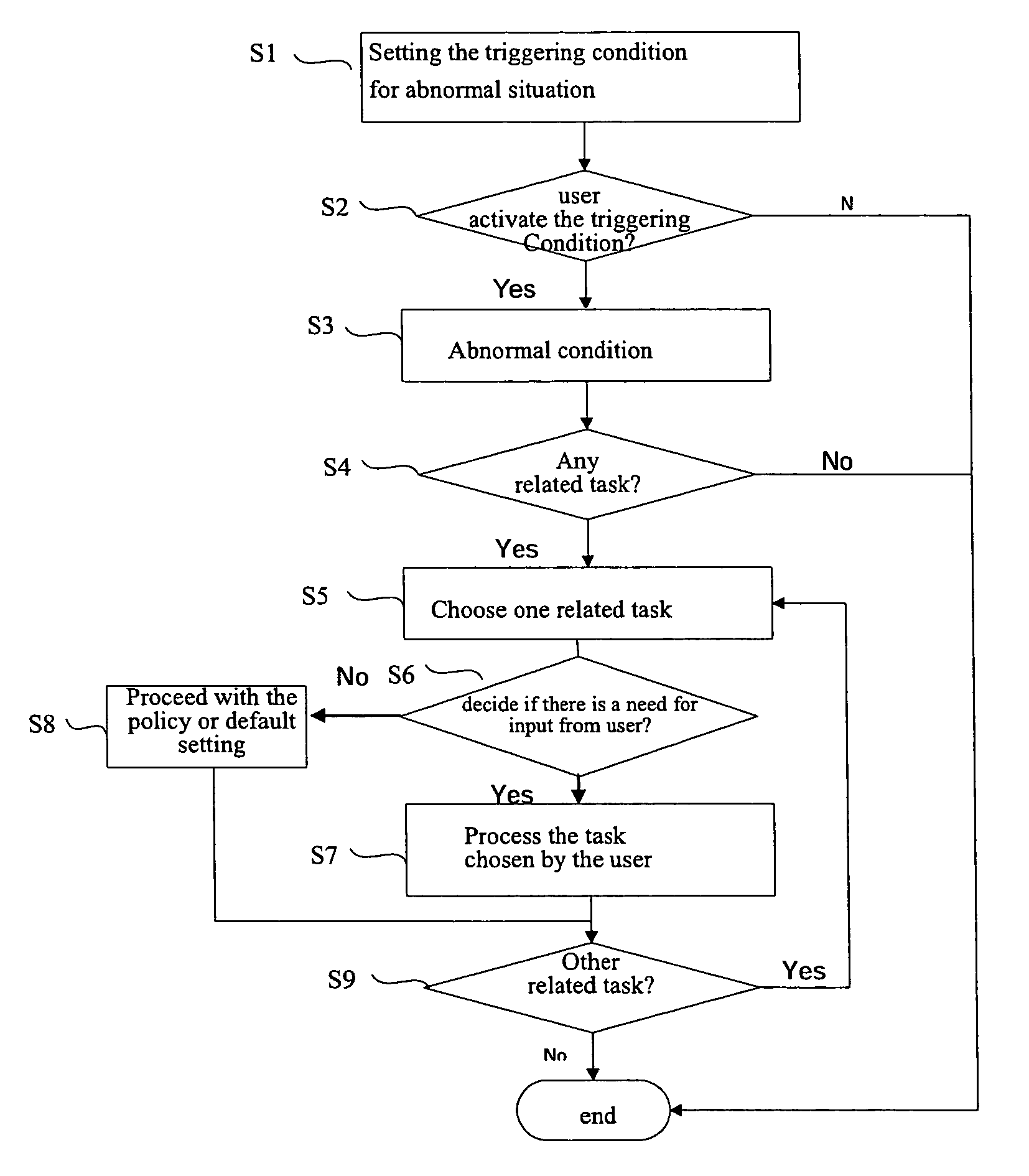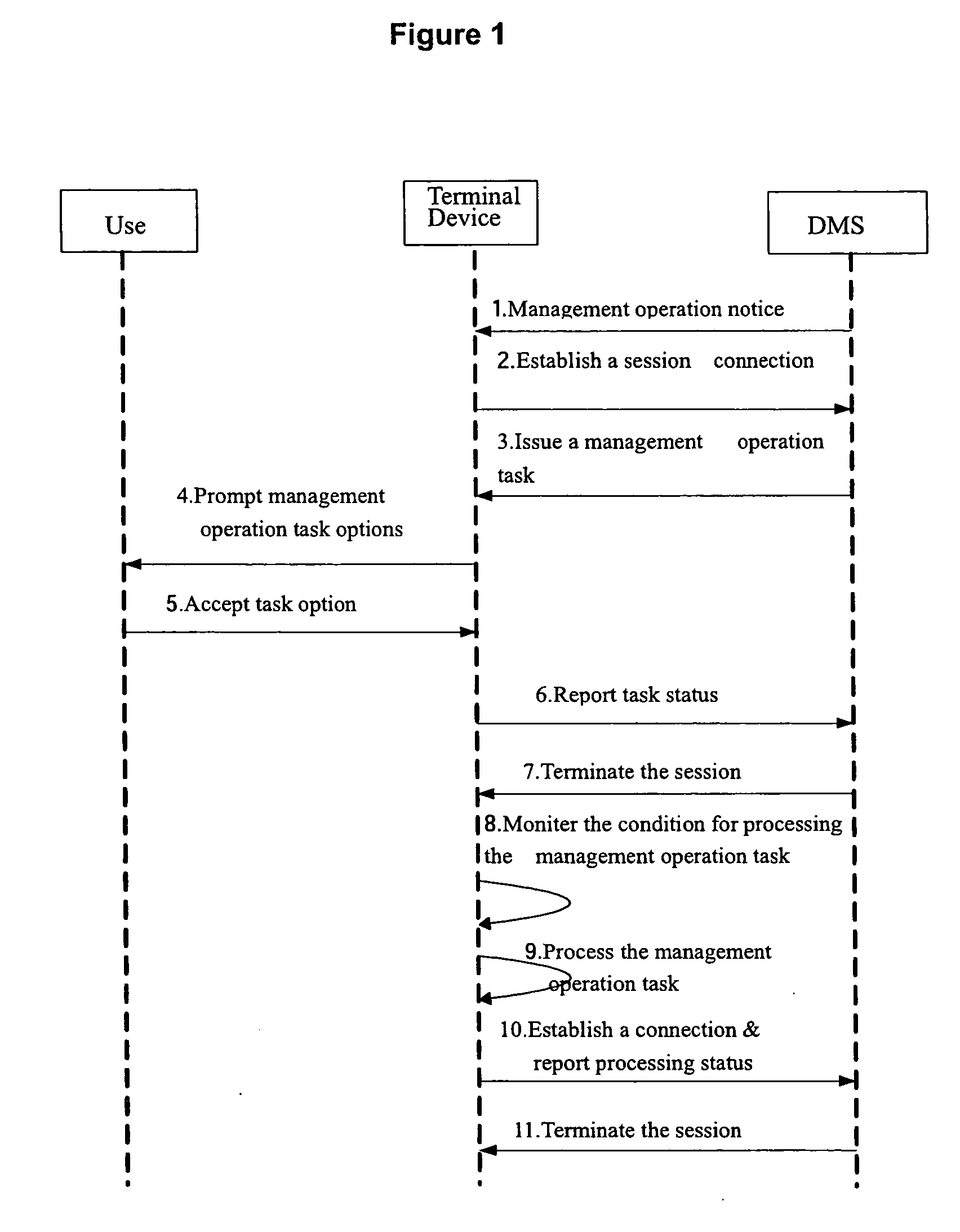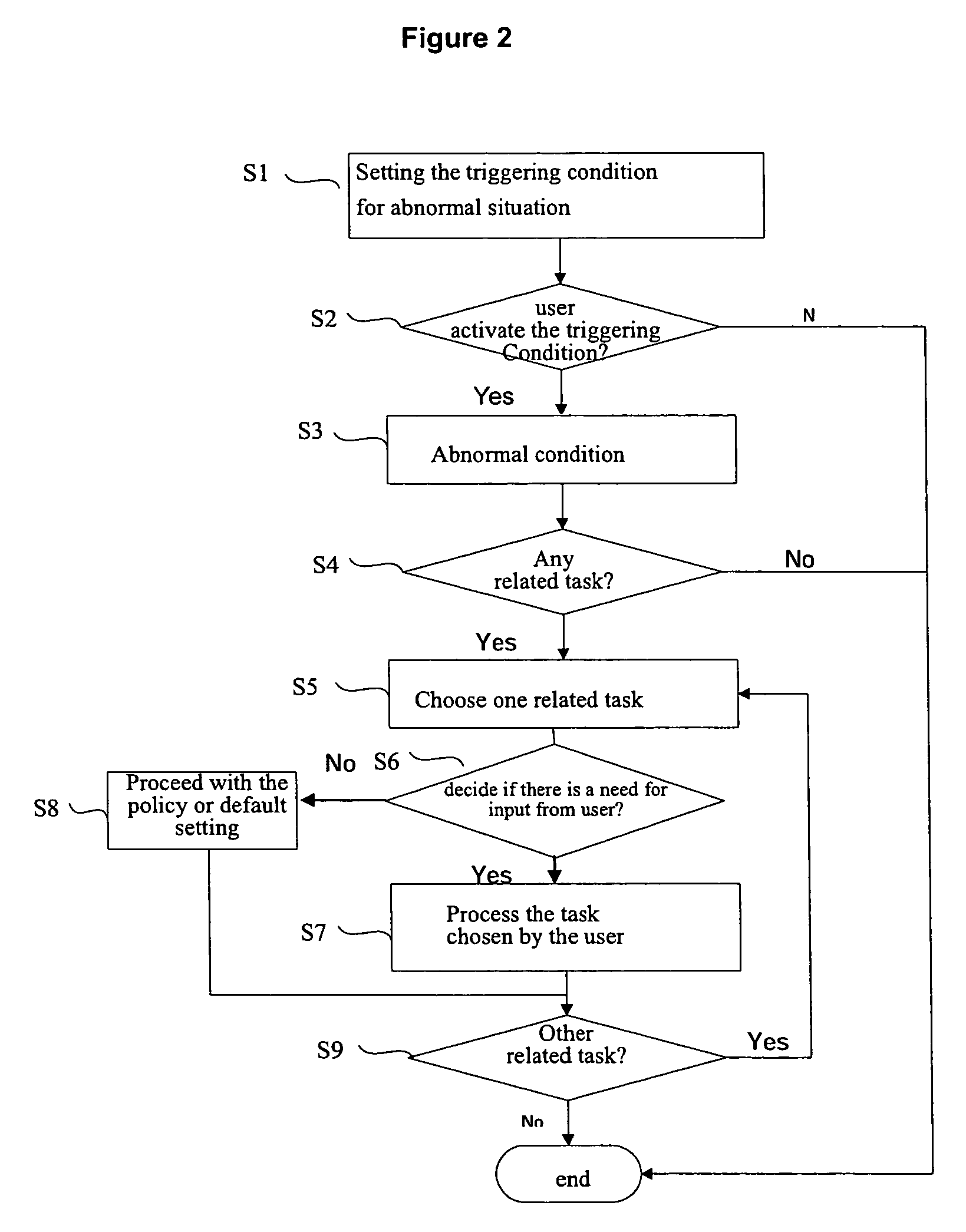Method, device and system for processing task in device management
a technology for managing devices and tasks, applied in the field of communication, can solve problems such as terminal devices, terminal devices, and terminal operating systems that cannot be triggered and processed normally, and the possibility of failure of terminal operating software is dramatically increased
- Summary
- Abstract
- Description
- Claims
- Application Information
AI Technical Summary
Benefits of technology
Problems solved by technology
Method used
Image
Examples
example 1
[0051] A terminal device is transiting from an on state to an off state, which interferes with the processing of the scheduler task. The processing steps are shown in FIG. 2.
[0052] S1. Setting the triggering conditions in the terminal device. The triggering conditions include:
[0053] The condition for detecting the abnormal situation. For example, the electric quantity of the battery of the terminal device is less than 5% or a pre-defined shut-off time is approaching, or a user is turning off the terminal device.
[0054] The triggering condition of the scheduler task. For example, set a time period of 8 hours for an abnormal condition from the time when the terminal device is turned off. Any tasks scheduled to be processed within 8 hours are the tasks to be interfered with.
[0055] The processing rules. The processing rules can be based on the predetermined processing procedure, i.e., the processing rules delivered by the DM server or pre-set by the user. Or the scheduler tasks can b...
example 3
[0078] The scheduler task is interrupted because the terminal device has adjusted its system time.
[0079] S1. Setting the triggering condition in the terminal device. The triggering condition includes:
[0080] The condition for activating the checking, for example, every time the terminal device adjusts its time.
[0081] The triggering condition of the scheduler task. For example, any task which should be processed, yet has not been processed, during the jumping time period or caused by the time adjustment.
[0082] (3) The processing rules. The scheduler task is processed based on the predetermined processing procedure, i.e., the processing rules delivered by the DM server or pre-set by the user, or the scheduler task is processed upon a user's choice or based on the default procedure. The 15 processing rules delivered by the DM server include: processing the task immediately, delaying to a certain time, or canceling the processing, and reporting to the DM server. For example, for a sc...
example 4
[0091] The condition under which the current state of the terminal device interferes with task processing. The flow chart is shown in FIG. 4, and the steps are as follows:
[0092] S1. Setting the triggering condition in the terminal device. The triggering condition includes:
[0093] The condition for determining an abnormal condition, that is, when the triggering time for the task is up, the terminal device is in an off state.
[0094] The triggering condition of the scheduler task. The task should be processed when the terminal device is in an off state.
[0095] The condition for allowing the device to be automatically turned on. For example, only when the terminal device is in an airplane mode (a user sets the terminal device off during his flight, usually the airline will not allow a user to turn on the terminal device), the device is not allowed to be turned on.
[0096] The triggering condition on which the scheduler task can be processed. For example, the processing is allowed only w...
PUM
 Login to View More
Login to View More Abstract
Description
Claims
Application Information
 Login to View More
Login to View More - R&D
- Intellectual Property
- Life Sciences
- Materials
- Tech Scout
- Unparalleled Data Quality
- Higher Quality Content
- 60% Fewer Hallucinations
Browse by: Latest US Patents, China's latest patents, Technical Efficacy Thesaurus, Application Domain, Technology Topic, Popular Technical Reports.
© 2025 PatSnap. All rights reserved.Legal|Privacy policy|Modern Slavery Act Transparency Statement|Sitemap|About US| Contact US: help@patsnap.com



